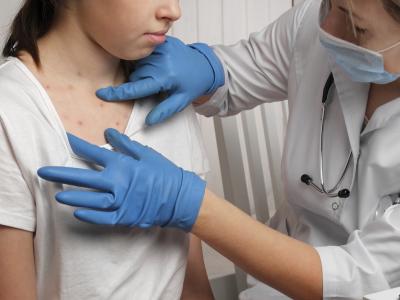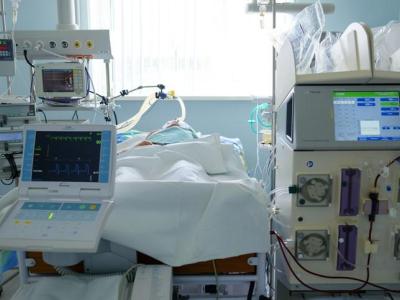Our weekly wrap-up of antimicrobial stewardship & antimicrobial resistance scans
UK health agency selects antibiotics for subscription payment model
England's National Health Service (NHS) announced today that it has selected the first antibiotics to be purchased through the United Kingdom's subscription-style payment model.
In collaboration with the National Institute for Health and Care Excellence (NICE) and the Department of Health and Social Care, NHS England selected the novel cephalosporin antibiotic cefiderocol, licensed for treating gram-negative bacterial infections in patients with limited options, and the beta-lactam/beta-lactamase inhibitor combination ceftazidime-avibactam, licensed for treating a number of infections, including pneumonia, intra-abdominal, and urinary tract infections.
Cefiderocol is manufactured by Shionogi and ceftazidime-avibactam by Pfizer. Over the next 12 months, NICE will evaluate the antibiotics to determine the annual subscription price the companies will receive.
The pilot program was launched by the NHS in 2019 to test a new model for paying for antibiotics that is based on their public health value. Under the program, NHS will pay companies on an annual basis for access to effective antibiotics, rather than reimbursing them based on the quantity of antibiotics sold. The aim of the payment model is to provide antibiotic developers with a predictable revenue stream and incentivize further investment in antibiotic development, while also promoting appropriate antibiotic use.
"Today is an important step in demonstrating that this payment model can be a 'win, win' for health systems and industry—NHS patients will be able to benefit from a secure supply of new antimicrobial drugs, while pharmaceutical companies will be able to reliably forecast their return on investment," project leads Mark Perkins and David Glover of NHS England wrote in a blog post.
NHS says the antibiotics will be made available to patients through the subscription model by early 2022.
Dec 18 NHS blog post
EU highlights progress on antimicrobial resistance action plan
Originally published by CIDRAP News Dec 17
The European Commission this week published its latest annual progress report on implementation of the European One Health Action Plan against Antimicrobial Resistance (AMR).
Among the highlights noted in the fifth progress report is the recent adoption of the European Union (EU) Farm to Fork Strategy, which aims to reduce EU sales of antibiotics for farmed animals and aquaculture by 50% by 2030, place AMR on the agenda of the G20 nations, implement a strategic approach to addressing pharmaceuticals in the environment, and adopt new EU legislation for AMR monitoring in bacteria from farm animals and food.
The report also highlights several agreements in 2020 between the EU and Asian countries to incorporate EU standards and measures for tackling AMR in trade agreements.
The three main pillars of the action plan, which was adopted in 2017, are to make the EU a best practice region, boost research, development, and innovation, and shape the global AMR agenda.
Dec 14 progress report
CDC updates treatment guidelines for uncomplicated gonorrhea
Originally published by CIDRAP News Dec 17
Citing rising resistance to azithromycin and the importance of antibiotic stewardship, the Centers for Disease Control and Prevention (CDC) is removing azithromycin from its recommended treatment regimen for uncomplicated gonorrhea.
Under new guidelines published today in Morbidity and Mortality Weekly Report (MMWR), the CDC is now recommending a single 500-milligram (mg) intramuscular shot of ceftriaxone for uncomplicated urogenital, anorectal, and pharyngeal gonorrhea. The previous guidelines recommended an intramuscular shot of 250 mg of ceftriaxone and an oral dose of azithromycin for uncomplicated infections caused by Neisseria gonorrhoeae.
The CDC recommended adding azithromycin to the regimen in 2010 to prevent ceftriaxone resistance and treat possible coinfection with Chlamydia trachomatis, and the combination therapy has been the only recommended regimen for uncomplicated gonorrhea since then.
The decision was made based on a review of literature and susceptibility data collected by the Gonococcal Isolate Surveillance Project, which showed that the national percentage of N gonorrhoeae isolates with reduced susceptibility to azithromycin increased more than sevenfold over 5 years (from 0.6% in 2013 to 4.6% in 2018). The percentage of isolates with reduced susceptibility to ceftriaxone remained steady over that period.
In addition, CDC staff were also concerned about the efficacy of azithromycin in treating chlamydial infections and studies showing increased presence of macrolide resistance genes in communities receiving mass administration of azithromycin.
"CDC recommends ceftriaxone monotherapy for treatment because N. gonorrhoeae remains highly susceptible to ceftriaxone, azithromycin resistance is increasing, and prudent use of antimicrobial agents supports limiting their use," the CDC concluded. "Continuing to monitor for emergence of ceftriaxone resistance through surveillance and health care providers' reporting of treatment failures will be essential to ensuring continued efficacy of recommended regimens."
In place of azithromycin, the guidelines recommend the addition of doxycycline if chlamydial infection has not been ruled out.
Dec 17 MMWR updated gonorrhea treatment guidelines
UK trial finds no benefit from azithromycin in hospital COVID-19 patients
Originally published by CIDRAP News Dec 15
Investigators with the United Kingdom's RECOVERY trial reported yesterday that a preliminary analysis of data from the azithromycin arm of the trial showed the antibiotic had no impact on clinical outcomes in hospitalized COVID-19 patients.
In the trial, which was conducted among COVID-19 patients at 176 National Health Service hospitals, 2,582 patients were randomized to receive 500 milligrams of azithromycin, an antibiotic, once daily and compared with 5,182 patients who received usual care. Patients entered the study an average of 8 days after onset of symptoms. The primary outcome was 28-day mortality, and the results, which were not peer-reviewed, were published on medRxiv, a preprint server.
Preliminary analysis of the data showed that 496 patients who received azithromycin (19%) and 997 patients allocated to usual care (19%) died within 28 days (rate ratio, 1.00; 95% confidence interval, 0.90 to 1.12; P = 0.99). Investigators also found no evidence of beneficial effects on the risk to progression to mechanical ventilation or length of hospital stay.
Azithromycin is one of several treatments for COVID-19 being tested in the RECOVERY trial, under the theory that it could reduce lung inflammation.
"Our results show very clearly that for patients hospitalised with COVID-19 azithromycin is not an effective treatment," Peter Horby, MD, PhD, chief investigator for the trial and a professor of emerging infectious diseases and global health at the University of Oxford, said in a press release. "While that is disappointing, it is nonetheless an important result that will guide clinical care around the world."
The investigators concluded that azithromycin should be used in COVID-19 patients only when antimicrobials are clearly indicated.
Dec 14 medRxiv study
Dec 14 RECOVERY trial press release












